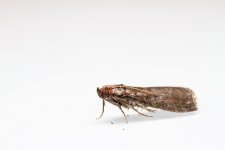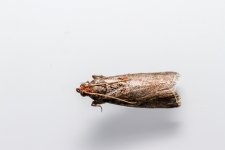Overread
Hunting birds with a canon
So I've not got any reference material for micro moths, and I am aware that there are many many types of them (as well as a good few unidentified) as well as many that require dissection to fully identify.
That said has anyone any idea who this little moth is? Quite a striking colouration so I think fairly easy to those in the know. Also any recommendations on good references for micro moths?
That said has anyone any idea who this little moth is? Quite a striking colouration so I think fairly easy to those in the know. Also any recommendations on good references for micro moths?






